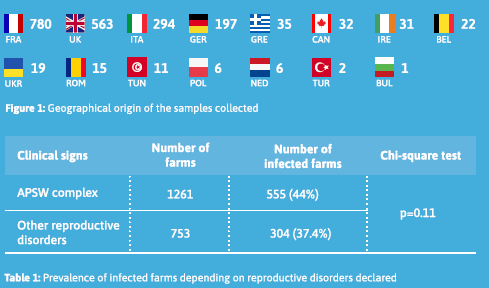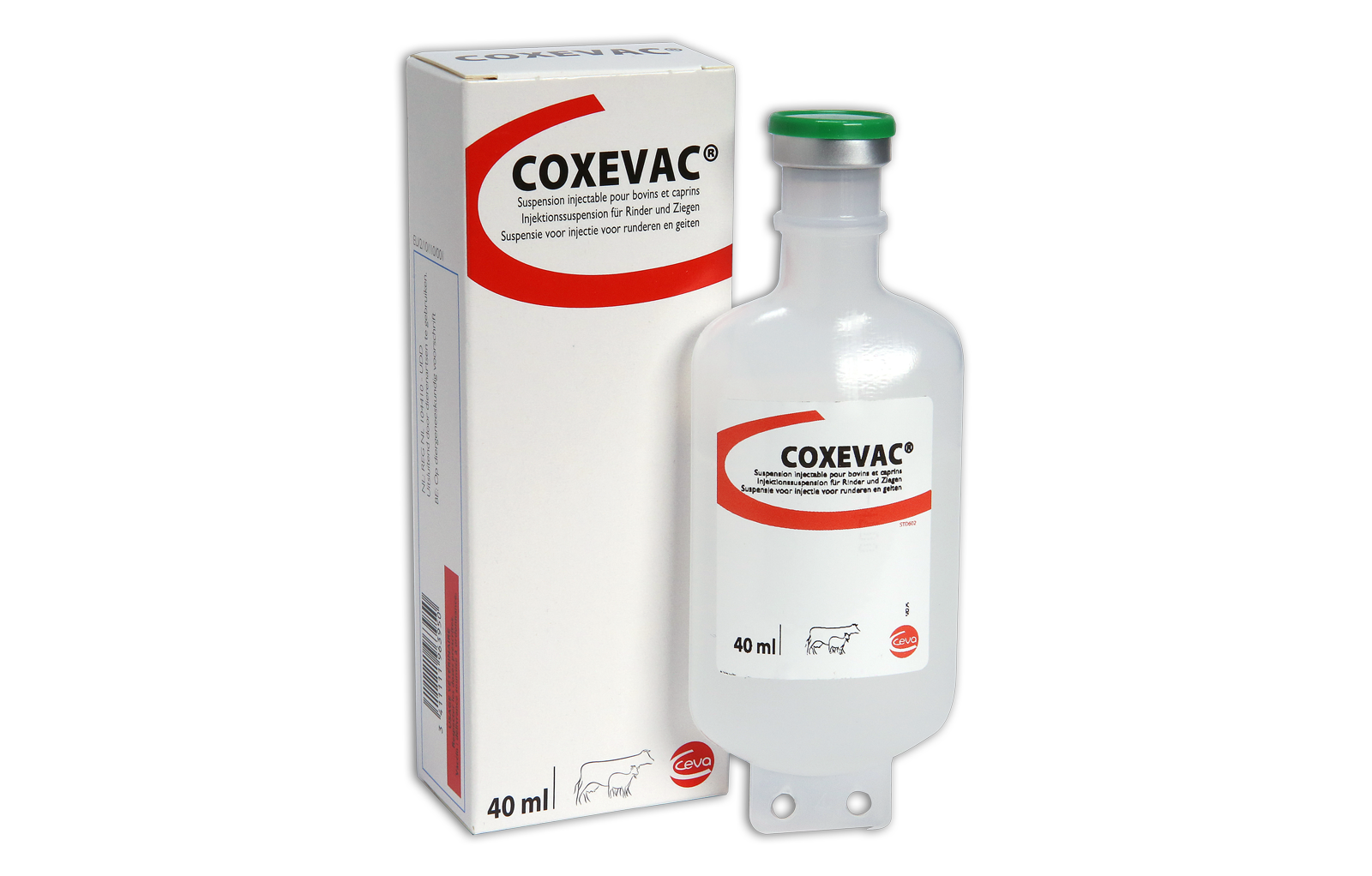Scientific article
Prevalence of Q Fever in dairy cattle farms with reproductive disorders (2025)
Authors
Philippe Gisbert, Carla Azevedo, Juan Muñoz Belsa 6 Michaël Treilles
Publication information
European Buiatrics Congress 2025
Objectives
The aim of this study was to compare the prevalence of Q Fever infection at herd level between farms reporting abortions and those reporting only other reproductive disorders.
- Abortions / premature delivery / stillbirth / weak born offspring (APSW complex).
- Metritis / endometritis.
- Retained placenta.
- Infertility.
Materials and Methods
PCR testing of bulk tank milk (BTM) is a simple and affordable way of testing for the presence of Coxiella burnetii in dairy herds. In 2020, Ceva and Qualyse developed QTest to facilitate the collection and transport of samples to the laboratory. QTest combines an easy sampling medium (FTA® card) that inactivates micro-organisms while preserving nucleic acids, with real-time PCR analysis carried out in a single laboratory in France. The use of QTest increases the sensitivity of BTM analyses (Treilles et al., 2021). Each QTest is accompanied by a sample identification form. On this form, the breeder or veterinarian sending the sample indicates any reproductive disorders present on the farm. It is possible to tick several boxes: The objective of QTest is to identify the presence of Coxiella burnetii in herds exhibiting reproductive dysfunction. In the present study, the results obtained over a four-year period, from October 2020 to September 2024, were subjected to analysis. The herds were classified into two groups. The first group comprised herds that had reported the APSW complex,
while the second group consisted of herds that had reported any of the other reproductive disorders. As multiple clinical signs could be reported, it was decided to assign to the APSW complex group, herds where both APSW complex and at least one other clinical sign were reported. The results of the two groups were then compared using the chi-square test.
Results
During the study period 2014 samples were collected from farms where at least one reproductive disorder had been reported. The geographical origin is shown in Figure 1.
APSW complex was reported on 1261 farms (62.6%). The presence of Coxiella burnetii in BTM was detected in 44.0% of them (n = 555). 753 farms (37.4%) reported only other reproductive disorders. Of these, 40.4% were positive for Coxiella burnetii in BTM (n = 304). The difference in prevalence was not statistically different between the two categories (p=0.11, Chi-square test)
(Table 1).

Conclusions
These results suggest that the presence of Coxiella burnetii in dairy cattle can be associated without difference with major reproductive disorders (abortions, premature delivery, stillbirth, weak born calves) or other reproductive disorders (metritis/endometritis, retained placenta, infertility). Testing for Coxiella burnetii should therefore be considered in herds with reproductive
problems, even in the absence of a high abortion rate.
Publication file:




